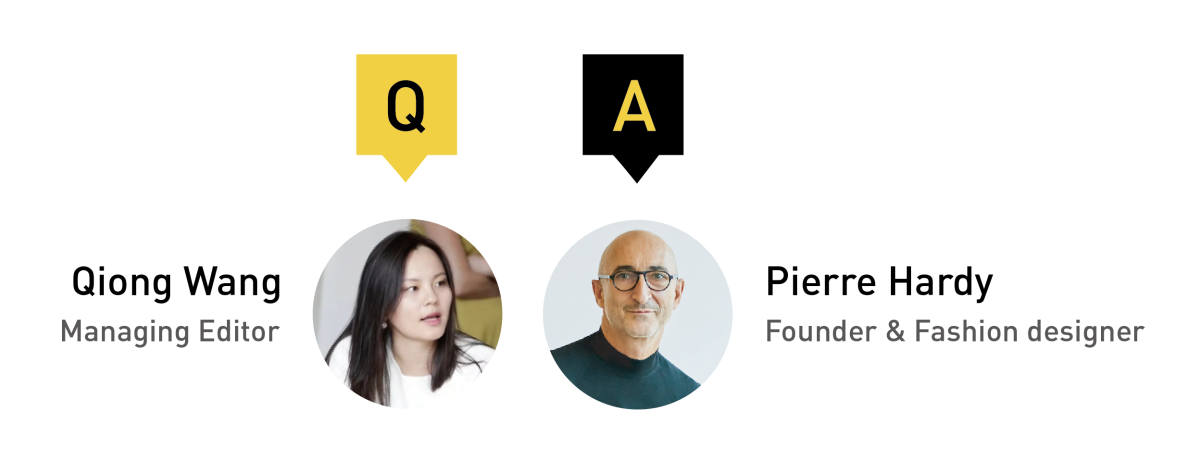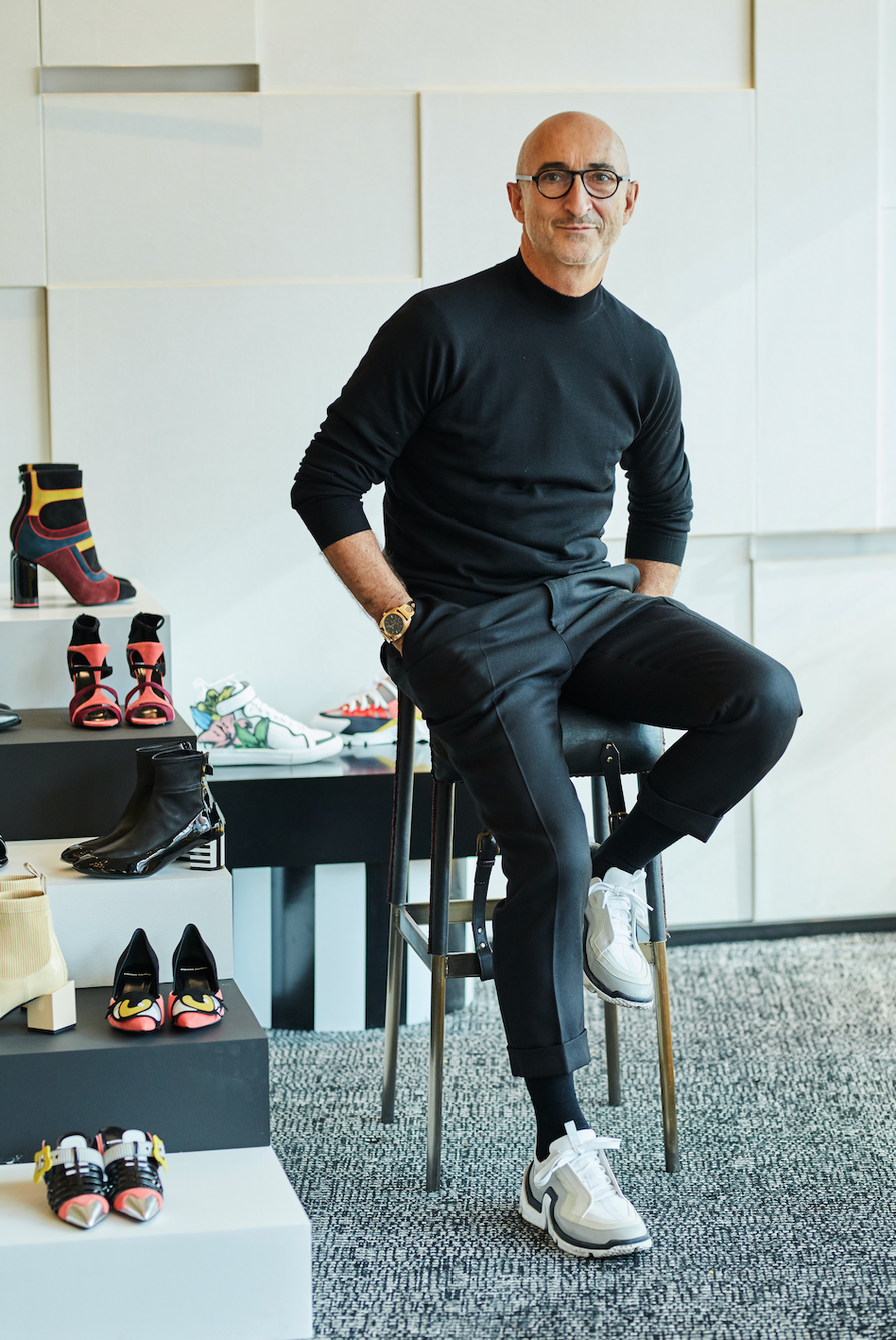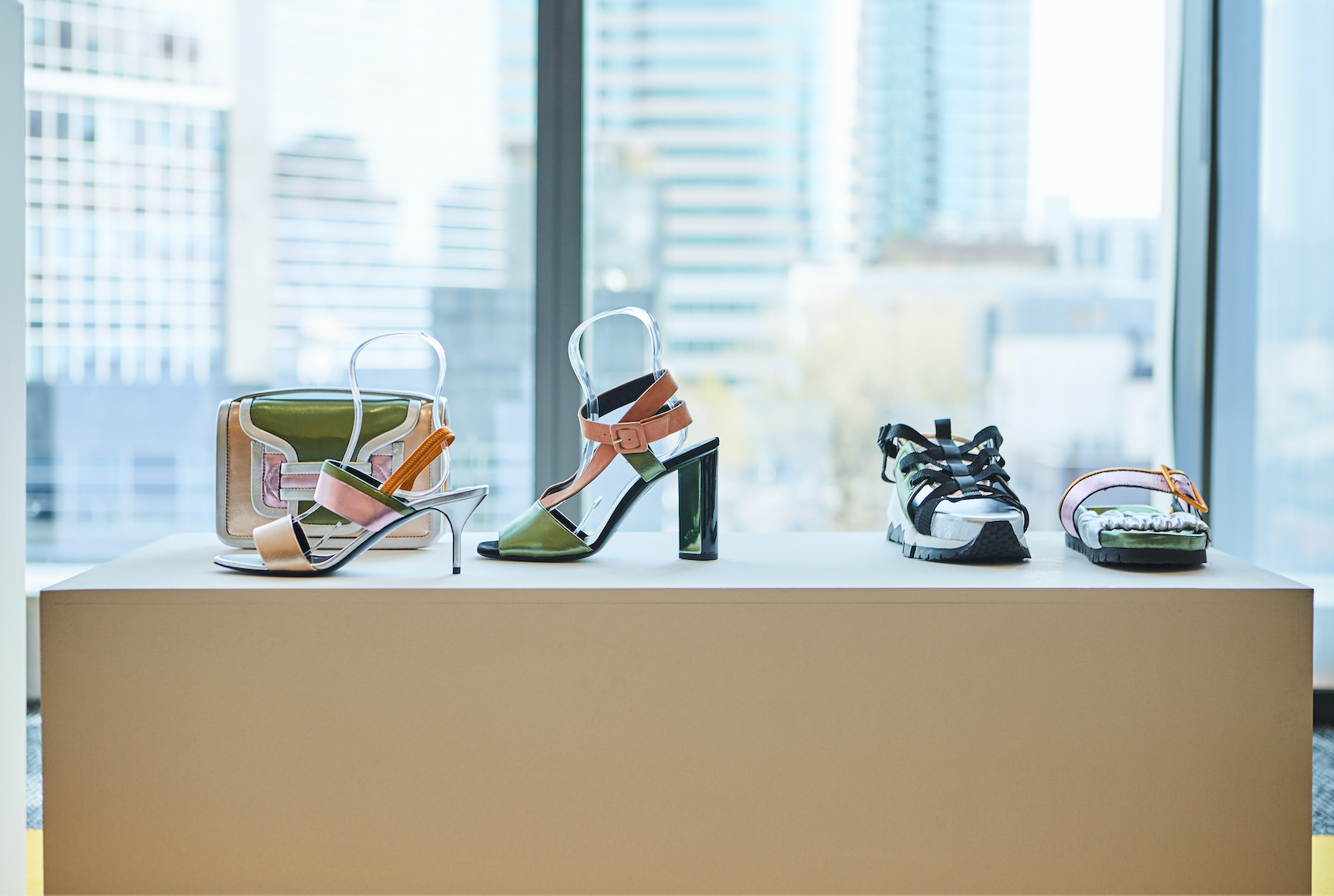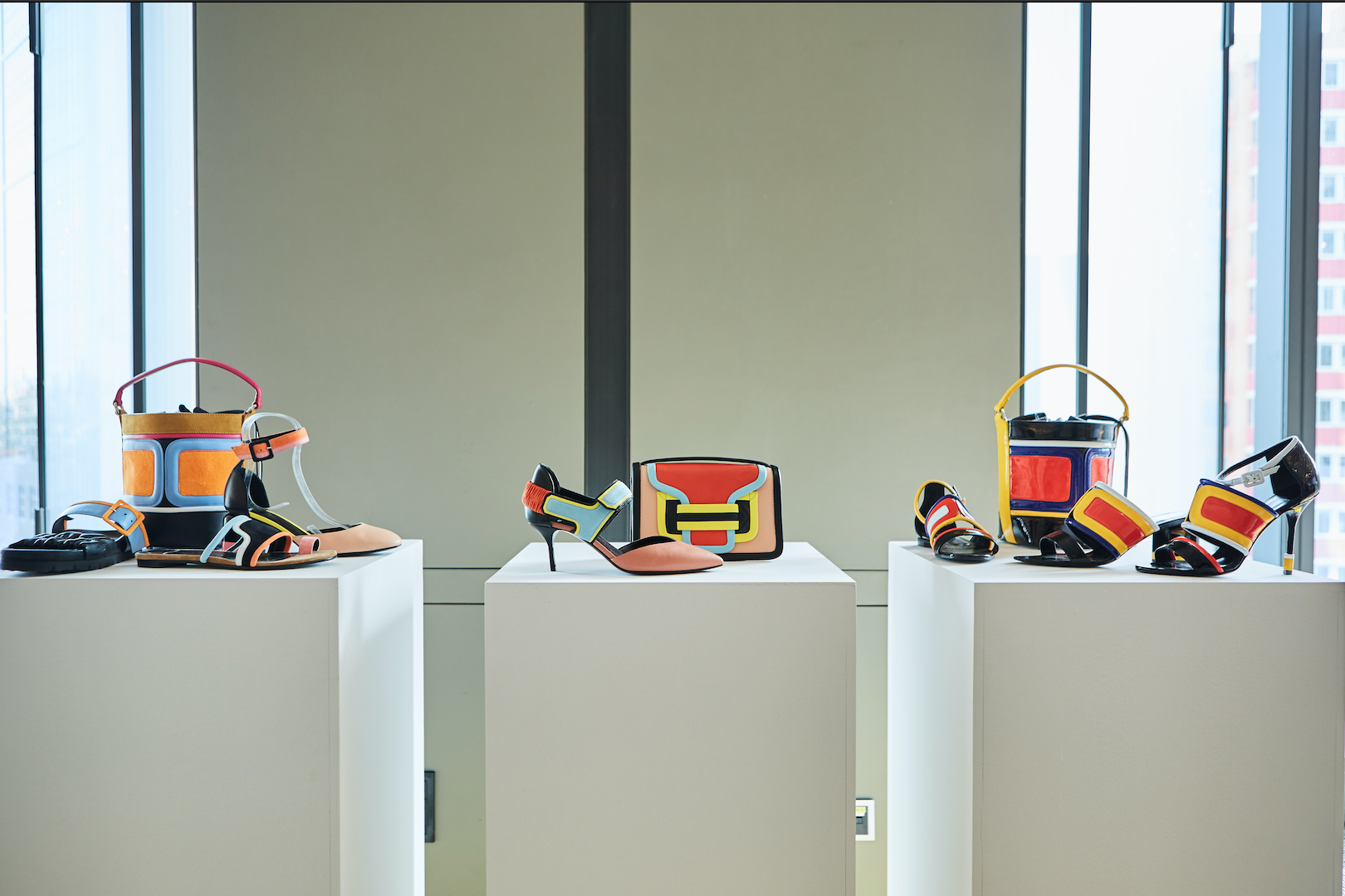INTERVIEW | Pierre Hardy: Once China Market Opened, Brands Are No Longer Niche
December 23,2019
Pierre Hardy, the talented French footwear designer who has designed several It-shoes for the likes of HermУЈs and Balenciaga, is celebrating the 20th anniversary of his eponymous shoe label this year. Recently, Pierre Hardy came to China for the fifth time, not only to bring the commemorative capsule collection and the Spring/Summer 2020 collection in collaborated with Lane Crawford, but also to further understand the world's most promising luxury consumer market and to find a clearer direction for the future development of his brand.
Luxe.CO has an exclusive conversation with Pierre Hardy to find out how one of the world's top shoe and accessory designers thinks about creating an eponymous brand and his view on the China market.Т

Building An Eponymous Brand, Creativity is Not Enough
Nowadays, in the world of fashion, there are not many designers left with the same industry experience as Pierre Hardy who have experience running an eponymous brand.
Many designers have to choose between working for a large brand or managing a personal brand and have no time to spare. There are very few designers who can do more than one thing at a time. Clearly, Pierre Hardy is in the latter group.

Luxe.CO: After many years working with HermУЈs and Balenciaga, what made you decide to set up your own brand?
Pierre Hardy: т20 years ago, when I was working for HermУЈs and other brands for shoe design, I noticed that there were quite a lot of designs and sketches they couldnтt use. So I told myself, letтs created a brand where I can express all these ideas that are left over.Т
HermУЈs really helps me a lot, they are like a second family for me. I have been working with them for 13 years, that was very helpful. In 2016, HermУЈs acquired a minority stake in the business, and we became partners. It is a big comfort to know that I can ask how to manage the business, and the future direction for the brand.т
Luxe.CO: What challenges you faced when you started your own brand?
Pierre Hardy: When I launched my eponymous brand, I thought I had the network, and I knew every part of the process, from factory, fabric to materials. But actually when you are by yourself, not working for a big brand, it changes everything, and it is hard. Because when you are working with factories with small quantities and with complicated products, it is not the same as the regular process.Т In the beginning, I did it all by myself, I did the first 2 collections. I didnтt have a commercial office. I have to find someone to invite clients, and distribute products. I discovered these while working on my own brand. But it was ok, because I was in my 40s, and I had other jobs to support me. I started to sell the brand in the US, then France, Europe and Japan.Т
Luxe.CO:Т How did you get the inspiration for design?
Pierre Hardy: Inspiration is like archaeology. You die inside, and you wake and come back on the surface with something new. That something is mixing with other layers of things that you have discovered. The inspiration is a result of very old memories, but those that you keep in your mind, and so itтs also the little moments you catch in reality, and ultimately mix together. Inspiration is a mix of all that. Some elements are very intimate and deep, others are very superficial and random.Т
Luxe.CO: Besides shoes and jewelry, what other categories are you interested in designing?
Pierre Hardy: All these are products, there has to be a purpose to design something. I have been gifted to design shoes, but if someone asks me to design furniture or cars, I need to know that they love what I did as a designer and believe in what I designed, because it is completely different for designer to create the brand or launch pure products from scratch. In the end, itтs not just about designing products, itтs a complex business, Maybe I will design something else in the future, but I donтt know yet.

Luxe.CO:Т Your career from HermУЈs, to Balenciaga, to your own brand, what do these experiences mean to you?
Pierre Hardy: I learnt many different things from all of these experiences. For example, Christine Dior was my first experience in a big couture & ready to wear brand. I learned things at different levels at Dior, such as serialized products, boutique operation, couture, ready-to-wear, brand authorization, etc. Especially within brand heritage, such as brand monograms and initials. I learned how to transform these elements to a collection, how to develop the type of style regarding the type of distributions that I didnтt know before.
At Balenciaga, I learnt how to work with a genius of fashion. The goal was to go as far as possible, as crazy as possible, as strong as possible. That was another path to try everything and be experimental.Т
At HermУЈs, I learnt the intelligence of the products, how to make it fair, honest, beautifully done, in the best way you can make it. And not to cheat in the product development. What you see is what you get. Itтs not just the images or gadget, itтs something real that is going to give you some pleasure, durability, some real experience of the beauty -- not just 2 seconds of joy when you buy it. The definition of true luxury.

Luxe.CO: China's fashion industry is developing rapidly. More and more Chinese designer brands have appeared, but none of them are internationally renowned yet. Do you have any suggestions or ideas?
Pierre Hardy: This is a big topic. Nowadays most brands, they are more about products, marketing and communication, Itтs not just about design. Secondly, this all takes time, and Chinese fashion market and industry are still growing. Fashion is also a cultural thing, it took time to construct -- take for example Dior and Givenchy, they took centuries to establish, it doesnтt build up in one day and it will take time. I know within modern society, there are a lot of ways to accelerate it, but if we look at the US for example,Т it also took them a lot of time to really build real fashion name and identities. I think China will find its own way, and will be entirely different in 20 or 30 years.
"If You Open The Chinese Market, You Are No Longer A Niche Brand."
Overseas designer brands such as Pierre Hardy have traditionally been considered niche brands in the market, but today's rising retail environment in China is giving these niche brands much wider potential.
"At the moment, the scale of our brand itself is small, and even smaller in China. But any niche brand, supported by the sheer size of the Chinese market, will not be a niche brand,т said Pierre Hardy, who spoke of his hopes for the Chinese market.
According to the research results of "White Paper on China's New Generation of Fashion Consumption 2018т released by Luxe.CO, "Shoes" were the most frequently consumed fashion item in the past year. According to Euromonitor International, the shoes market in mainland China grew 7.7 percent year-on-year to 411.3 billion yuan in 2018, with men's shoes, accounting for 38 percent to 156.1 billion yuan and women's shoes 48 percent to 19.9 billion yuan. It is estimated that the shoe market in mainland China will grow to 522.3 billion yuan by 2021.
Luxe.CO: Whatтs the scale of the SKUs for your brand?Т
Pierre Hardy: SKUs for shoes is about 20-40% for each season, including sneakers. The sales of bags accounted for 10-15% of the global sales.
Luxe.CO: Which market performed the best on retail?
Pierre Hardy: Actually we are quite balanced between the US and Europe, Middle East and Asia, more or less between 25%-30% each, there are some variations, but it is more or less the same.

Luxe.CO: China now is the test/demo market for many luxury brands. Whatтs your plan in China market.Т
Pierre Hardy: We are a small brand, but this can be an advantage for us, not to be everywhere. We are planning to open some stores in China.
Firstly I need to know how people position my brand, then we will choose the right place. It takes time to understand to really oversee clearly and carefully. For example for Tokyo, it took us 2 years to choose to open the store. So we are not in a rush. We want to understand and we want to at the right place. We know little about the country here and are looking for the right partner to help us.Т What we are producing is not a mass product, it will never be. A part of the products can be though, for example, sneakers.Т
Luxe.CO: Why did you plan to choose this time to enter the China Market?Т
Pierre Hardy:Т I think now is the right timing to enter the China market. People often ask me why didnтt you do it before? First of all, it was because we are not ready yet, and second the market was not really there for niche brands -- it was only for big brands. But now I think the fashion market in China is more mature, and they can understand us -- we wonтt do a massive campaigns on all types of media and will more focus on products to attract customers.Т
Even though niche consumers in China are still not that substantive yet, due to modern ways of communication (WeChat, Weibo, RED, TikTok, etc), the number of customers will increase faster and faster, especially when combined with all the online offline channels, large population, huge Internet exposure -- this means you could quickly find target customers and exposure will be spread widely.Т
Luxe.CO: Whatтs your future plans for the brand? Are you open to cooperating with other brands?
Pierre Hardy:Т To stay independent. I think we are more like a craft company. For example, the factories we are working with in Italy are very small, but one of them we worked with them since the beginning, so our relationship is very intimate. But we are open for collaboration with other brands -- it is nice to have collaboration from time to time, but not continuously, such as capsules or cross-over. We did some collaboration with Gap, NARS and Sacai before. These collaborations were very interesting and fun. It is a new way of considering product, a new way to approach creation. And when I get back to my own collection, I am often inspired from the collaboration itself.
Currently, PIERRE HARDY has opened flagship stores in Paris, New York and Tokyo, with over 200 counters around the world. It is also available at high-end retailers such as Saks Fifth Avenue, Lane Crawford, Harrods and Bergdorf Goodman, as well as luxury e-commerce sites such as Farfetch. PIERRE HARDY is also looking into the China market and looking for the right partner.Т
It may not be easy for overseas brand to find a local partner in China, as the perspectives/expectations from two sides are different. Most of overseas luxury brands will like to control the number of stores and productions to keep it niche and luxury, however the China partners may want to bring the brand to the mass market to increase sales. So the brand needs to find the right balance.












Comments